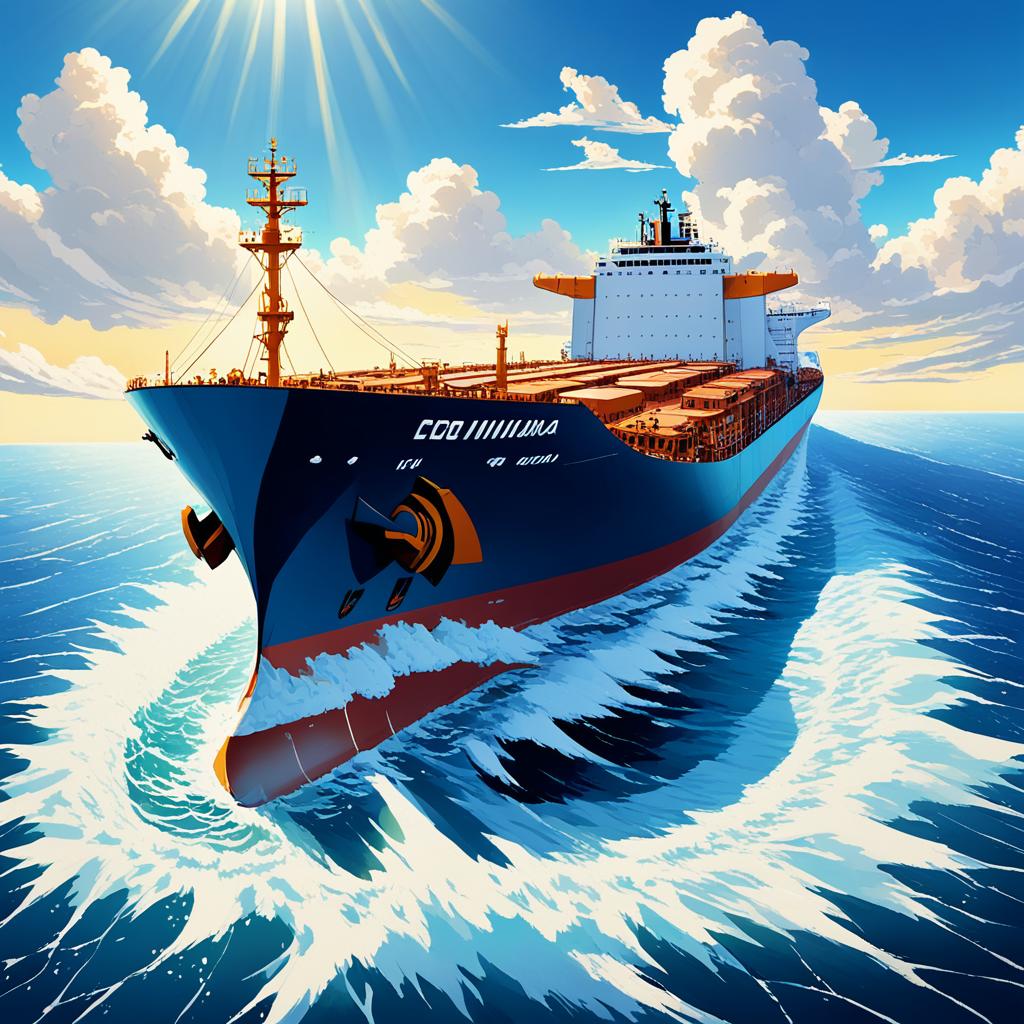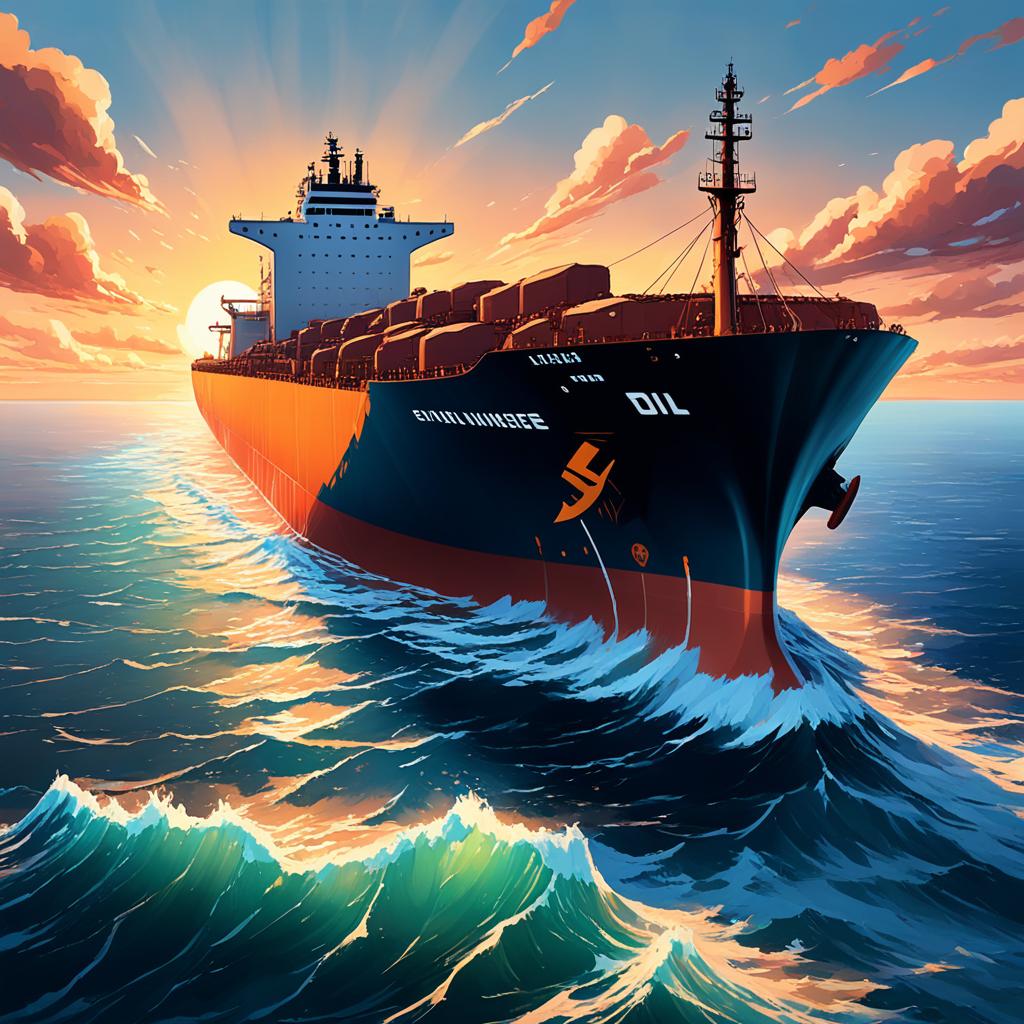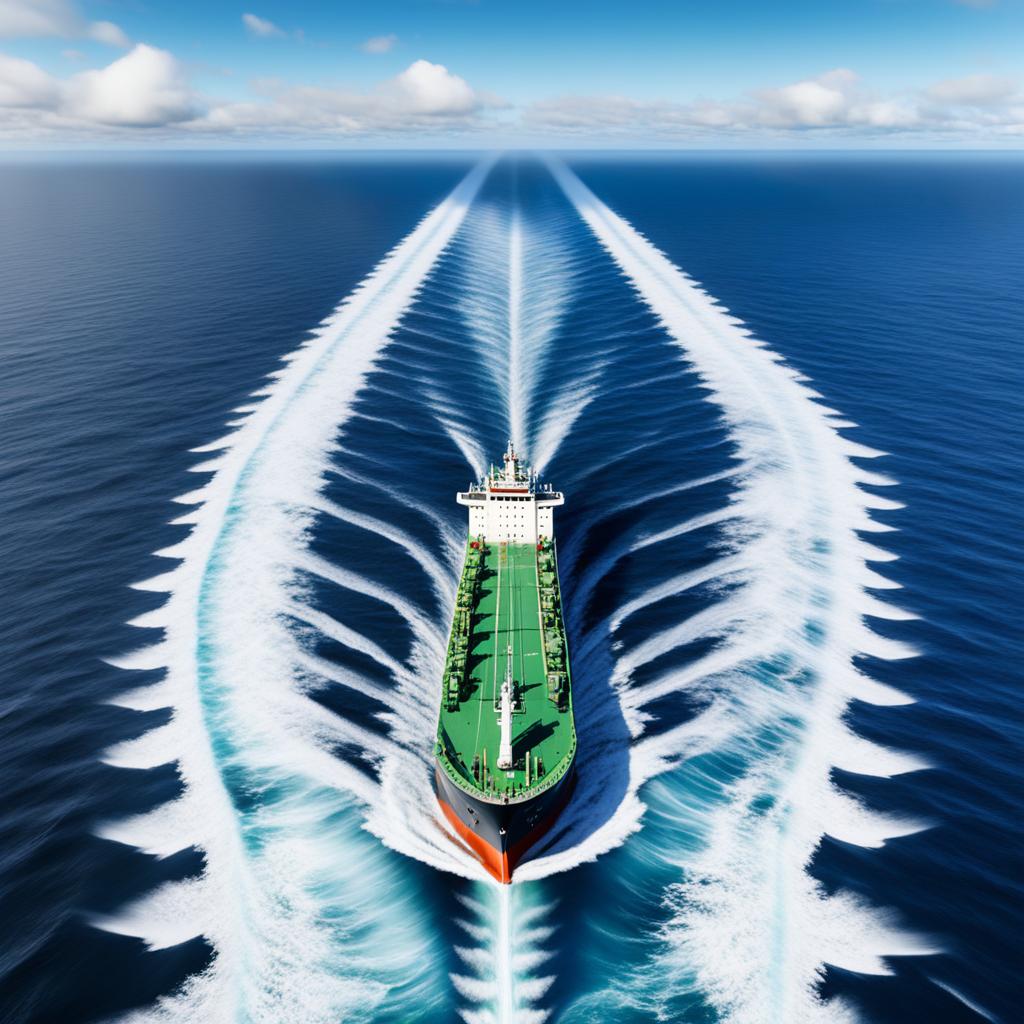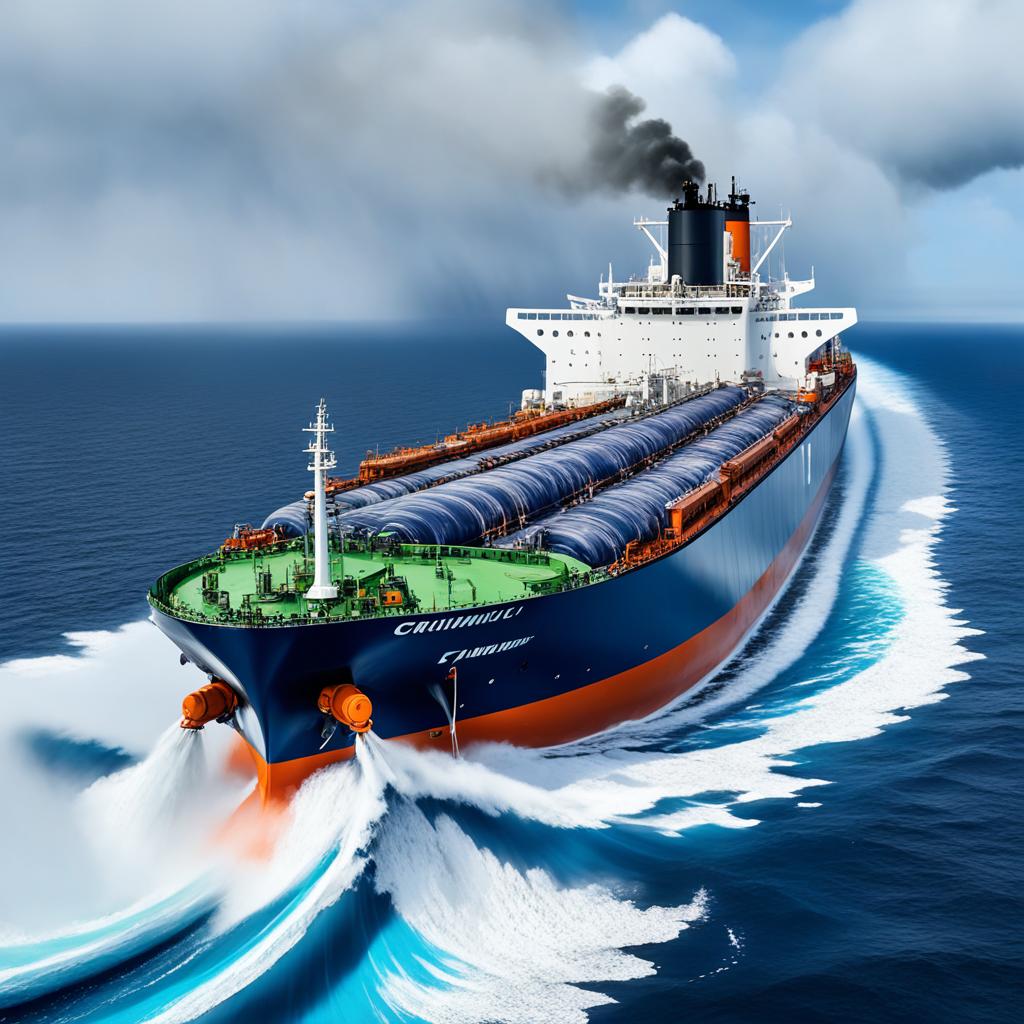Have you ever wondered how fast an oil tanker can travel? Do these enormous vessels zoom across the ocean at high speeds, or do they plod along at a leisurely pace? The answer may surprise you as we delve into the realm of maritime logistics and explore the travel speed of oil tankers.
When it comes to travel speed, oil tankers vary depending on their size and purpose. Container ships, which are a faster type of cargo ship, can reach speeds of around 20 knots (37 km/h). However, larger cargo ships that transport oil or iron ore typically have a slower speed ranging from 12 to 15 knots (22-28 km/h).
But why do oil tankers cruise at relatively lower speeds? What factors affect their velocity? And how does their speed compare to other modes of transportation? Join us as we unravel the mysteries of oil tanker travel and gain insights into the fascinating world of maritime logistics.
The Route of Cargo Ships
Cargo ships navigate specific routes to reach their destinations. They follow established paths that are optimal for efficient and safe transportation. Two common routes used by cargo ships are the Great Circle route and the Rhumb Line.
The Great Circle route is the shortest route between two points on the Earth’s surface. It is a curved path that follows the arc of a great circle, taking into account the Earth’s curvature. This route offers significant time and fuel savings for cargo ships traveling long distances.
On the other hand, the Rhumb Line is a route that maintains a constant heading. It is a straight line on a Mercator projection map, making it easier to navigate. While the Rhumb Line may not be the shortest distance between two points, it allows for easy course plotting and navigation without constant adjustments.
Today, cargo ships primarily rely on the Great Circle route due to the availability of advanced technologies such as GPS navigation. By utilizing the Great Circle route, ships can optimize their routes and minimize travel time.
For example, let’s consider a container ship traveling at a speed of 20 knots. This ship can cover approximately 4,800 miles in 240 hours (10 days) when following the Great Circle route from Los Angeles to Tokyo.
| Route | Distance | Estimated Travel Time |
|---|---|---|
| Great Circle | 4,800 miles | 240 hours (10 days) |
| Rhumb Line | Distance varies | Travel time varies |
When choosing a route, cargo ships consider multiple factors, including weather conditions, sea conditions, and tidal currents. These factors can impact the efficiency and safety of the journey. By carefully evaluating these variables, cargo ships can select the most suitable route for their voyage.
Transporting Crude Oil

Crude oil is an essential resource that is transported across long distances to meet the energy demands of countries like Japan. In the case of Middle East to Japan crude oil transport, very large crude carriers (VLCCs) are the preferred vessels for this massive undertaking.
The journey begins at the port of Ras Tanura in Saudi Arabia, one of the largest oil terminals in the world. From there, the VLCCs follow a carefully planned route that takes them through key maritime chokepoints and across vast oceans.
- First, the VLCCs navigate through the strategically important Strait of Hormuz, the narrow passage that connects the Persian Gulf to the Arabian Sea. This critical transit point poses its own challenges due to its narrow width and potential geopolitical risks.
- Once through the Strait of Hormuz, the VLCCs sail across the Indian Ocean, covering a significant distance as they head towards the next phase of their journey.
- The straits of Malacca and Singapore mark another crucial leg of the voyage. These narrow waterways are major shipping lanes that connect the Indian Ocean to the Pacific Ocean. Navigating through these congested straits requires careful coordination and adherence to international maritime regulations.
- Finally, after crossing the straits of Malacca and Singapore, the VLCCs sail through the expansive Pacific Ocean, making their way to Tokyo Bay, Japan’s major port.
The Middle East to Japan crude oil transport distance spans approximately 6,600 miles, equivalent to roughly twice the width of the continental United States. A VLCC navigating at an average speed of 14 knots covers this distance in around 470 hours, or approximately 19.5 days.
A VLCC is an impressive vessel capable of carrying up to 300,000 tons of crude oil. To provide some perspective, this amount is approximately equivalent to Japan’s oil demand over a period of about 12 hours. It underscores the immense scale of crude oil transportation and the role of VLCCs in meeting the energy needs of nations.
| VLCC Specifications | Statistics |
|---|---|
| Length | 1,093 feet |
| Beam | 200 feet |
| Capacity | Up to 300,000 tons |
| Crew | Average of 25-30 crew members |
Transporting Iron Ore

When it comes to transporting iron ore from Brazil to Japan, the most commonly used route is via the Cape of Good Hope, located at the southern tip of Africa. This particular route is chosen due to the limitations of the Panama Canal, as well as the higher cost associated with canal tolls. Navigating through the Cape of Good Hope allows for a more efficient and cost-effective journey.
The navigation distance for this route is approximately 12,000 miles, covering a considerable distance across the Atlantic and Indian Oceans. The journey itself takes almost 3 months for a round trip, accounting for the necessary time required for loading and unloading the cargo at both ends. Such a long journey highlights the global nature of iron ore transport, linking producers in Brazil with consumers in Japan.
To enhance transport efficiency and accommodate the large volume of iron ore, super-large iron ore carriers known as Vale Max have been introduced. These massive vessels have the capacity to carry up to 400,000 tons of iron ore at a time, further optimizing the transportation process and allowing for more significant quantities to be transported in a single voyage.
Transporting iron ore from Brazil to Japan is a complex logistical process that requires careful planning and coordination. By leveraging the Cape of Good Hope route and utilizing specialized iron ore carriers, the industry ensures the efficient and timely delivery of this vital resource to meet the demands of Japan’s steel production.
Shipping Lanes and Safety

Shipping lanes are designated routes for large ships to navigate safely. In the Santa Barbara Channel, these shipping lanes are approximately 5 nautical miles wide, with a northbound lane, a southbound lane, and a separation zone between them.
For smaller vessels, it’s crucial to be aware of these shipping lanes and exercise caution to avoid crossing them or getting too close to big ships. Safety should always be a top priority when sharing the waters with these massive vessels.
Here are some important safety tips to keep in mind:
- Stay out of the way of big ships: Give them ample space to maneuver and avoid impeding their course.
- Understand their limitations: Big ships have limited visibility and require longer distances to stop or change direction. Always assume they cannot see you.
- Yield right-of-way: As a smaller vessel, it’s your responsibility to yield to larger ships. Be patient and allow them to pass safely.
By following these safety tips and being mindful of shipping lanes, you can help ensure a safer and more efficient maritime environment for everyone.
The TI Class Supertankers
The TI class of supertankers consists of four ships: TI Africa, TI Asia, TI Europe, and TI Oceania. These ships were the first ultra-large crude carriers (ULCCs) to be built in 25 years. They were constructed by Daewoo Shipbuilding & Marine Engineering in South Korea and entered service between 2002 and 2003.
The TI class supertankers have a displacement of 509,484 tonnes when fully loaded and are powered by a single HSD-Sulzer engine. They also have features that contribute to their size and efficiency. For example, the double-scrubbing system in the ballast tanks helps reduce the environmental impact by treating ballast water before discharge. Additionally, the reflective white hull minimizes hydrocarbon emissions, making them more environmentally friendly.
These supertankers are significant in terms of their size and capacity. Here’s an overview of the key features of the TI class supertankers:
| Ship Name | Displacement (fully loaded) |
Power Source | Key Features |
|---|---|---|---|
| TI Africa | 509,484 tonnes | HSD-Sulzer engine | Double-scrubbing system, reflective white hull |
| TI Asia | 509,484 tonnes | HSD-Sulzer engine | Double-scrubbing system, reflective white hull |
| TI Europe | 509,484 tonnes | HSD-Sulzer engine | Double-scrubbing system, reflective white hull |
| TI Oceania | 509,484 tonnes | HSD-Sulzer engine | Double-scrubbing system, reflective white hull |
These advanced features contribute to the operational efficiency, safety, and environmental performance of the TI class supertankers, making them notable players in the global shipping industry.
Conversion to Floating Storage and Offloading (FSO) Vessels
In 2009 and 2010, two of the TI class supertankers, TI Asia and TI Africa, were converted into floating storage and offloading (FSO) vessels. These conversions were carried out by EuroNav and Overseas Shipholding Group and were done to moor the vessels off the coast of Qatar in the Al Shaheen Oil Field. The extensive conversions allowed the supertankers to serve as storage facilities for oil production in the Persian Gulf. In 2017, TI Europe was also chartered and converted into an FSO vessel at the Port of Kuala Sungai Linggi in Malaysia.
Conclusion: The Role of Oil Tankers in Global Shipping Logistics
Oil tankers are a crucial component of global shipping logistics, facilitating the transportation of vital resources such as crude oil from production regions to consumer markets. These massive vessels play a significant role in ensuring the steady supply of energy resources worldwide.
Depending on the type and purpose of the cargo ship, oil tankers’ cruising speeds can vary. Container ships, known for their efficiency, can reach speeds of around 20 knots, enabling faster deliveries of goods. However, larger cargo ships carrying oil or iron ore typically maintain speeds of 12-15 knots, optimizing their transport capacity.
The routes and navigation days of cargo ships are meticulously planned to ensure efficient and safe transportation. While airplanes excel in expedited deliveries, ships have the advantage of mass transportation, allowing for the transportation of vast quantities of goods at a time.
Moreover, safety is paramount in maritime transportation, particularly when navigating through designated shipping lanes. Smaller vessels must be mindful of the limitations of larger ships and take necessary precautions to avoid accidents or disruption in maritime logistics. By adhering to safety practices, the risk of collision or interference with the route of oil tankers can be minimized.
The impressive TI class supertankers have made substantial contributions to the shipping industry. With their immense size and advanced features, these vessels have been adapted for various purposes, such as floating storage and offloading. Their innovative design and ability to transport colossal quantities of goods have revolutionized the maritime transportation sector.


